What happened to Kansas City's first school for Black students — and its historical marker?
Walking past Dr. Jeremiah Cameron Park in Westport, a reader noticed a marker for something called the Penn School and wrote to What’s Your KCQ?, a partnership between the Kansas City Public Library and The Kansas City Star, to learn about it.

The park, located on Broadway Boulevard between 42nd and 43rd streets, marks the “Penn School Historic Site,” and was named for an alumnus of the Penn School who was an educator and the second Black member of the Missouri Parks and Recreation Board. The class of 1933 dedicated the plaque in homage to their alma mater in 1992.
As of this writing, the plaque is missing — a reminder of the shaky role markers play in preserving local history and the challenges of making that history known.

The inscription told of Mrs. Samuel Ellis, “the wife of a retired capitalist” in the Kansas City area who established the first school west of the Mississippi for the “express purpose of educating black children.”
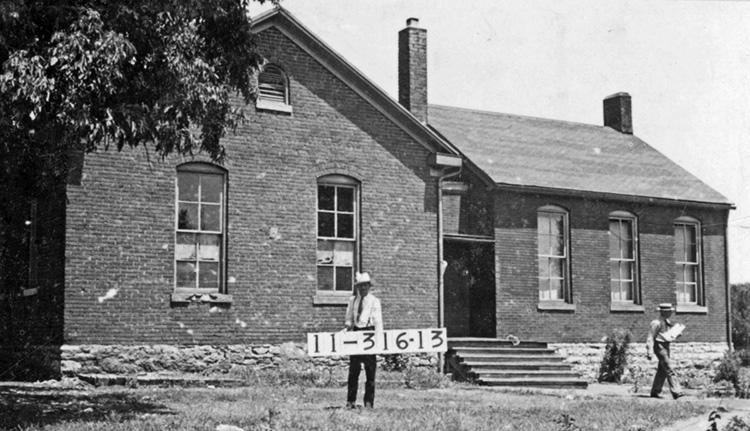
Daniel Smith, a member of the Westport Historical Society, has extensively researched the school. He reported that Marian Ellis was one of its teachers, from January to May 1870, and that her time was most likely shortened by motherhood.
Marian most certainly did not start the school, even though she’s inexplicably named as the founder in two or three separate histories that precede the plaque.
The Ellis family consisted of Marian, Samuel, and their son, Stafford. Together, they immigrated to the U.S. from England and settled in or near Westport, Missouri, between 1868 and 1870.

For years, both Samuel and Marian worked to support their family and did not begin to build wealth until Samuel entered the dairy trade around the turn of the century, establishing the Ellis Dairy Company.
When Marian taught at the Penn School prior to the family’s dairy days, the school had already been operating for roughly thirty years.
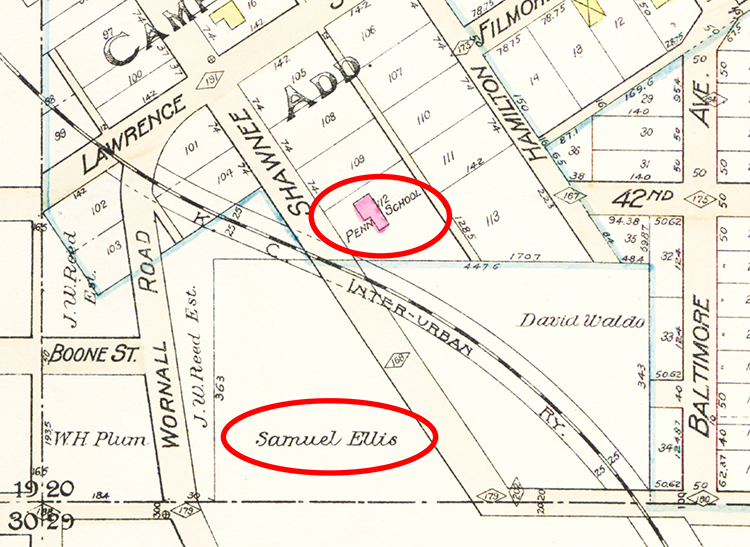
The founding of the Penn School was tied to legislation that arose from the end of the Civil War in 1865 and was not the brainchild of one particular person.
In that year, the Missouri legislature ratified a new, controversial constitution. In addition to outlawing slavery in the state nearly a year before the 13th Amendment to the U.S. Constitution did so on a national scale, it contained provisions to remove Confederate sympathizers from public offices.
It also allocated state funds to establish schools for Black children.

The actual date of the Penn School’s founding is a bit murky. Any time after 1865 is plausible, but documentation points to a school for Black children being established by the Westport School District at some point in 1867 or 1868 — right around when Marian moved to the area, and long before she could have established a school herself.
The school did not have a formal name for some time; residents simply called it the “colored school” until 1895 when a Westport Sentinel-Examiner article described it as the Penn School.

An unsupported claim holds that the school, which served the Steptoe community as well as other nearby Black neighborhoods, was named for William Penn, the early American Quaker and namesake of Pennsylvania.
However, it’s more likely that the name came from the street on which it was located, Pennsylvania Avenue, Smith said, following suit with other schools of that time — like the Main and Troost schools — which took their names from the streets where they were situated.
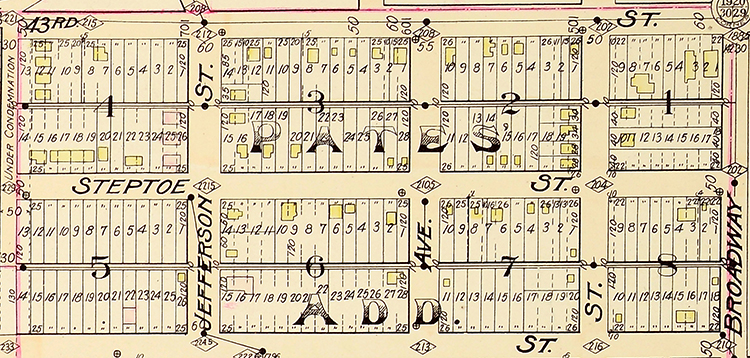
The Penn School occupied at least four locations during its existence: Pennsylvania Avenue between Westport Road and Archibald Street; Broadway Boulevard near Archibald; a building that also housed the former St. Luke’s A.M.E. Church at 43rd Street and Roanoke Road; and Pennsylvania between 42nd and 43rd streets – just north of the Ellis’ farm.
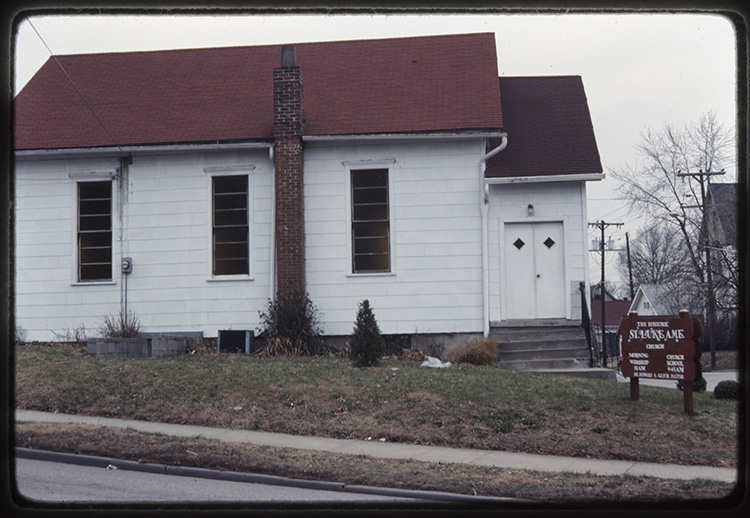
Generations of Black Westport residents and Kansas Citians attended the Penn School, the most famous of whom was Kansas City jazz legend Charlie “Yardbird” Parker.

The 1954 Brown v. Board of Education landmark ruling brought about the closure of the Penn School following the 1954-‘55 school year. Members of the student body were integrated into other area schools; the Penn School building was too old and outdated for continued use.
On May 26, 1955, the school hosted “The Last Round Up,” a gathering of former students, teachers, principals, and their families. Members of the public were also invited. The event featured music, a history of the school given by former teacher Marguerite B. Smith, skits, and an open house.
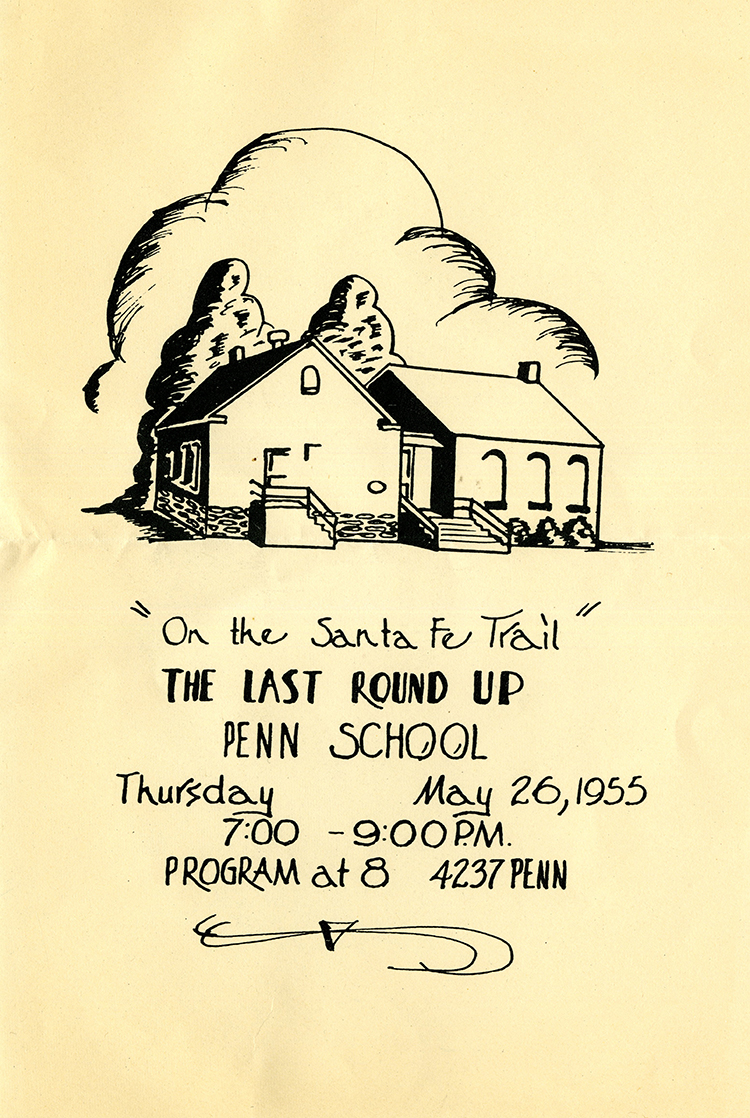
After the closure, some Westport area organizations expressed interest in buying and preserving the old Penn School building. Most of that interest came from an offshoot of the Westport Historical Society called the Old Westport School Shrine.
The Heart of America Real Estate Company bought the old schoolhouse with the intention of repairing the building and giving it to the Old Westport School Shrine, but by the time the sale was finalized, the group had lost interest.

In 1967 the school building burned down.
It wasn’t until 20 years later that the seventh-grade class of 1933 decided to raise money for a historical marker to preserve the school’s memory. It took the alumni five years to complete the Penn School Memorial Project.
The Kansas City Parks Department reported that unfortunately, the plaque was most likely stolen to be sold for scrap metal. Hopefully the marker will be replaced soon. The Penn School was one of the first institutions for the education of the area’s Black population and its legacy should be preserved for all Kansas Citians.
SUBMIT A QUESTION
Do you want to ask a question for a future voting round? Kansas City Star reporters and Kansas City Public Library researchers will investigate the question and explain how we got the answer. Enter it below to get started.


